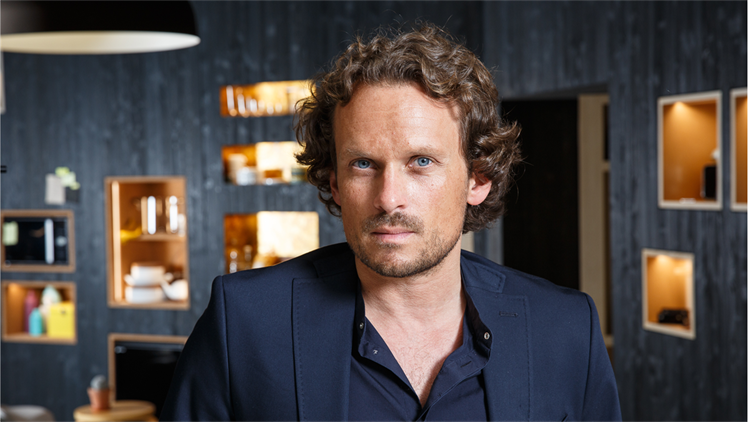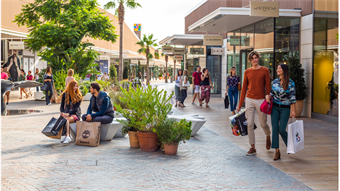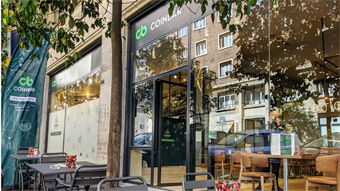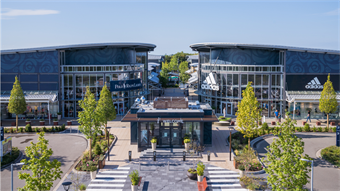The Shanghai Job
- In Interviews
- 11:00, 24 March 2020
- 4607 Views

As iconic car brand Mini fits its compact urban know-how into a global co-living concept, experiential retail breaches new frontiers in hospitality and brand engagement
The science of increasing dwell time across retail assets is a key theme today for property owners and brands. Multiple studies have shown how better food and beverage (F&B) and leisure provision extend shopping trips and increases total spend. But what if you could persuade your potential customers to stick around for 24 hours, a week, or even three months? What then?
Perhaps surprisingly, an answer has emerged not from the world of retail property, but from an iconic retail brand, Mini. The British-born car manufacturer, owned by Germany’s BMW since the year 2000, has been flirting with real estate development for some time. In 2017, the brand launched A/D/O, a creative hub in Brooklyn which transformed an abandoned warehouse into a mixed-use space accessible to the general public, combining co-working design labs with retail, gallery space and F&B.
A/D/O was inspired by Mini’s roots, dating back to 1959. In the midst of an acute fuel shortage, Sir Alec Issigonis set up a secret design office to develop a smaller-than-ever car that would make it easier to manoeuvre in cities. The name of his team was Amalgamated Drawing Office, A/D/O, and the 2017 project followed suit by collapsing creative space into a cool but accessible resource, bringing the brief full circle.
Mini to micro
Mini’s latest big idea, Mini Living, takes the car’s space-as-a-premium expertise for a much more ambitious spin: a global roll-out of co-living spaces. With the first scheme in Shanghai on track for a June opening, further projects are now in the works across Europe and the US.
In a pioneering take on the experiential retail trend, the initiative cross-contaminates the brand with the urban temporary living movement, as Mini Living creative lead Oke Hauser explains. ‘We wanted to answer the question of how to innovate in city spaces, just as the Mini innovate in mobility,’ he says. ‘Co-living is also an interesting area – it allows us to translate our core principle of creative use of space into architectural design fostering human connections.’
In terms of making connections with the automobile brand, the co-living spaces will offer Mini car-sharing. But the project’s subliminal messages are arguably much stronger. ‘it’s not a show-room, which someone visits for a few hours. You get to experience and live the brand,’ Hauser notes. ‘It’s about making Mini a partner in crime for people’s daily lives. Essentially, it’s a blended experiential space, but provides a really functional experience as well.’
Shangai surprise
The Mini Living project in Jing’An, Shanghai, transforms six buildings of an abandoned paint factory into a home for singles, sharers and families on short, medium-term and extended tenancies. The 7,600 m2 space is divided into 30% apartments, 30% public and shared spaces, and 30% retail and culture when it opens in June 2020. ‘We’re in the project’s last mile,’ Hauser confirms.
‘We’re not just offering residential – it’s about integrating places to live, work and play in a project which opens up to the city. We wanted to create something inclusive, which welcomes in the public ‘We have a lot of cultural space, free coworking areas, and multiple roof terraces offering a range of uses. There’s a garden area and a space you can rent to host a private dinner party. The public spaces are distributed throughout the building, to encourage hanging out beyond the lobby.’
The accommodation continues the sharing theme, Hauser notes. ‘We have 52 apartments in the building, including different sizes for different budgets – studios at one end, with the largest apartments on the top floor. They are designed so you live in a cluster of 4 to 12 people, with a shared living room and kitchen space, and private bed and bathroom.’
Jing’An is one of Shanghai’s central districts, a place where traditional and contemporary tend to collide. Named after the ancient gold-painted Buddhist shrine Jing’An Temple, here, luxe shopping malls brush up against famed Art Deco dancehall The Paramount, while dumpling shops neighbour dimly-lit cocktail bars.
‘The project is located at the heart of one of Shanghai’s most innovative districts, but is in an authentic Chinese neighbourhood,’ Hauser confirms. ‘That means that its users can access local culture directly. We want to create a place where locals and foreigners mingle – a place breaking down walls and thinking beyond borders.’
Eat, sleep and breathe retail
Mini’s co-living move is part of retail’s latest drive to quite literally create a captive audience for its products. The world’s largest luxury goods seller, LVMH, acquired Belmond Hotel group last year for $3.2 bn in a move to expand its hospitality reach.
Combining diversification with transversal marketing, the ownership helps LVMH brands like historic luggage label Louis Vuitton weave romantic connections with Belmond’s high-end destinations, which range from the Hotel Cipriani in Venice to the Hotel Splendido in Portofino, as well as the Venice Simplon-Orient-Express and Royal Scotsman train services.
The move is smart for a number of reasons: not only does it broaden LVMH’s place in the expanding luxury hospitality sector, whose revenues are being upgraded by the increasingly wealthy Gen Z and Gen Y consumers, but it embeds them as key players in what has been described as the ‘experience economy’. Luxury labels are now required to also deliver on the lifestyle that they promise.
LVMH owns brands including Christian Dior, Bulgari and Fendi, and recently bought out iconic jeweller Tiffany, as well as owning dare-to-dream names such as Dom Pérignon. Belmond isn’t its first foray into the world of hospitality, as owner of Bulgari Hotels and Resorts and Cheval Blanc Hotels, but it marks a sea-change.
While luxury fashion co-branded hotels aren’t a new idea – Italy’s Salvatore Ferragamo launched its first hotel properties nearly 20 years ago – the digital age and the power of social media mean that lifestyle tie-ups today require a deeper and more intelligent integration. ‘Historically we have seen luxury brands such as Bulgari and Armani opening hotels via collaborations with hotel operators or developers,’ says Laura Salisbury Jones, director, Central London retail, at Savills.
‘LVMH’s acquisition of the Belmond is different – they have a clear stake in the business, and are much more involved in delivering on that, highlighting a significant investment in the hotel sector and experience economy.’
Cafe culture
Following on from that, in January of this year Louis Vuitton announced plans to open its first restaurant, called Le Café V, within its four-storey maison in Osaka, Japan. LVMH is set to sponsor a clone of famed Italian restaurant Langosteria in Paris, while the group’s latest acquisition, Tiffany, has started rolling out its famous Blue Box Café beyond New York – with the first in its brand-new flagship store in Shanghai, that launched in December.
All these initiatives have the potential to expand a brand’s reach without diluting the name – even if you can’t afford iconic Louis Vuitton tote, the Neverfull, you can surely pay for a coffee in LV-branded ceramic.
The same reasoning inspired upmarket Italian designer Prada to open a retro-chic tea shop, Pasticceria Marchesi, above its Galleria location in Milan in 2015. It now runs three of these vintage-styled patisserie locations across the city.
Not all of luxury’s experiential drives represent such gentle nudges towards a brand. The pop-up phenomenon is alive and well, says Marie Hickey, Savills’ director of commercial research, and allows labels to show-up in unlikely spaces, often in quite aggressive ways. ‘If you’re lunching a new product or a new designer collaboration, pop-ups are a way to showcase that new activity. They can be a totally diff erent location to where you have your permanent store and are a powerful marketing tool,’ Hickey notes.
Top of the pops
Adds Salisbury Jones: ‘In New York in December, Chanel took over the exterior and lobby of the Standard High Line Hotel for a week, creating a Chanel-themed winter wonderland. There were queues around the block.’ Meanwhile, Gucci shook up its pre-Christmas traffic with the launch of Gucci Pin, a pop-up concept designed to expand its global presence. Named for the icons placed on digital maps, Gucci Pin pop-ups featured as branded pins in Google Maps, decorated in patterns reflective of the stores’ themes. All in all, it seems that physical retail is improving in the art of the surprise, which may be no bad thing.
‘Luxury brands are realising that they need to keep the younger generation engaged. It’s what’s driving enhanced social media platforms and in-store tech. These are customers that get bored easily,’ notes Hickey. In China, this generation also has 5G at its fi ngertips, making seamless digital experiences more important than ever. With Gen X and Gen Z consumers in China among the world’s wealthiest, it’s clear that many retail innovators will continue to trial their hottest new formats in Asia.
Meanwhile, heritage brands in Europe – particularly in France and Italy – can still count on footfall driven by retail tourism and the lure of historic flagships in peerless downtown locations. But if the laser-fast lessons of the last few years are anything to go by, change is definitely on its way.






